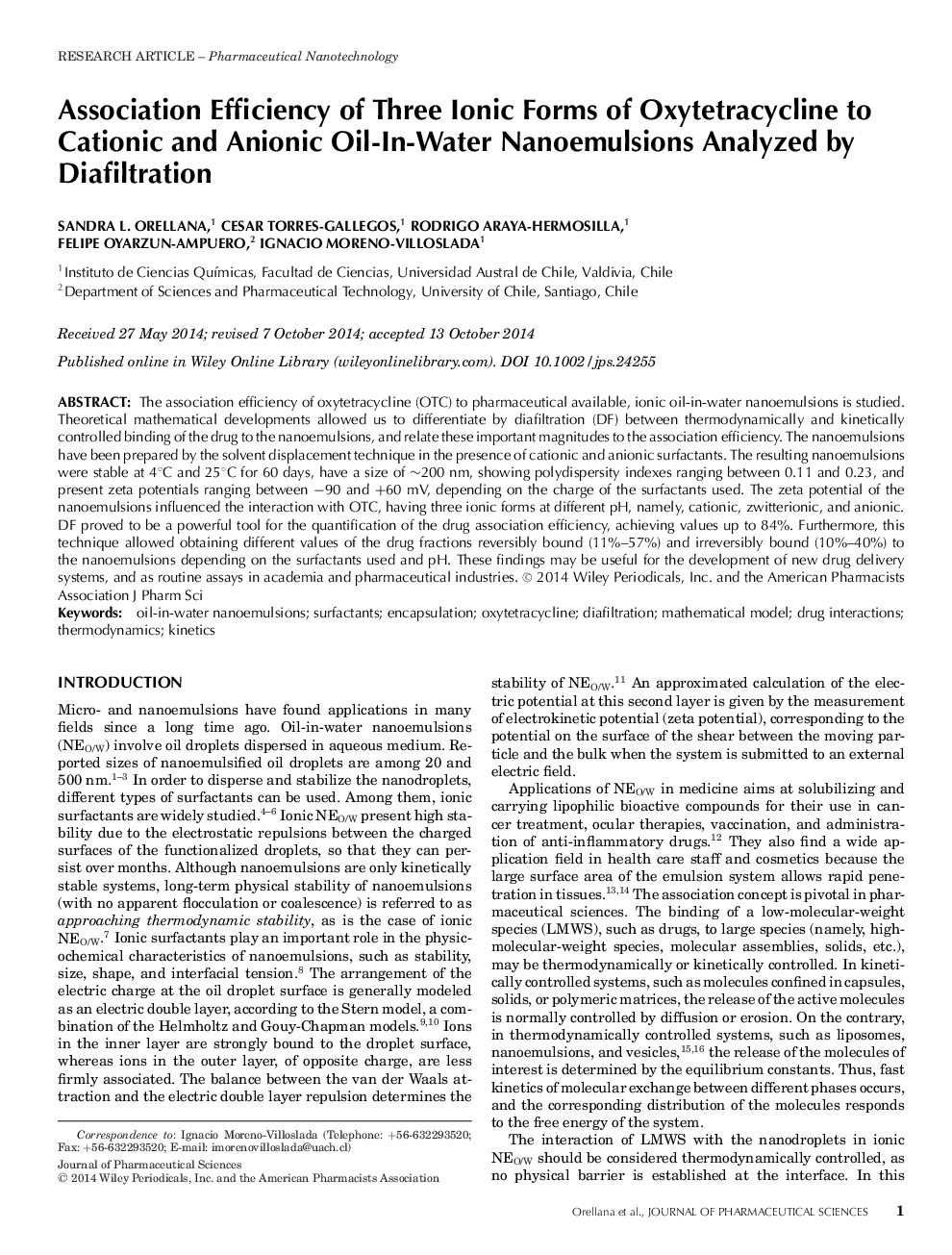| Article ID | Journal | Published Year | Pages | File Type |
|---|---|---|---|---|
| 10162072 | Journal of Pharmaceutical Sciences | 2015 | 12 Pages |
Abstract
The association efficiency of oxytetracycline (OTC) to pharmaceutical available, ionic oil-in-water nanoemulsions is studied. Theoretical mathematical developments allowed us to differentiate by diafiltration (DF) between thermodynamically and kinetically controlled binding of the drug to the nanoemulsions, and relate these important magnitudes to the association efficiency. The nanoemulsions have been prepared by the solvent displacement technique in the presence of cationic and anionic surfactants. The resulting nanoemulsions were stable at 4 °C and 25 °C for 60 days, have a size of â¼Â 200 nm, showing polydispersity indexes ranging between 0.11 and 0.23, and present zeta potentials ranging between â 90 and + 60 mV, depending on the charge of the surfactants used. The zeta potential of the nanoemulsions influenced the interaction with OTC, having three ionic forms at different pH, namely, cationic, zwitterionic, and anionic. DF proved to be a powerful tool for the quantification of the drug association efficiency, achieving values up to 84%. Furthermore, this technique allowed obtaining different values of the drug fractions reversibly bound (11%-57%) and irreversibly bound (10%-40%) to the nanoemulsions depending on the surfactants used and pH. These findings may be useful for the development of new drug delivery systems, and as routine assays in academia and pharmaceutical industries. © 2015 Wiley Periodicals, Inc. and the American Pharmacists Association.
Keywords
Related Topics
Health Sciences
Pharmacology, Toxicology and Pharmaceutical Science
Drug Discovery
Authors
Sandra L. Orellana, Cesar Torres-Gallegos, Rodrigo Araya-Hermosilla, Felipe Oyarzun-Ampuero, Ignacio Moreno-Villoslada,
